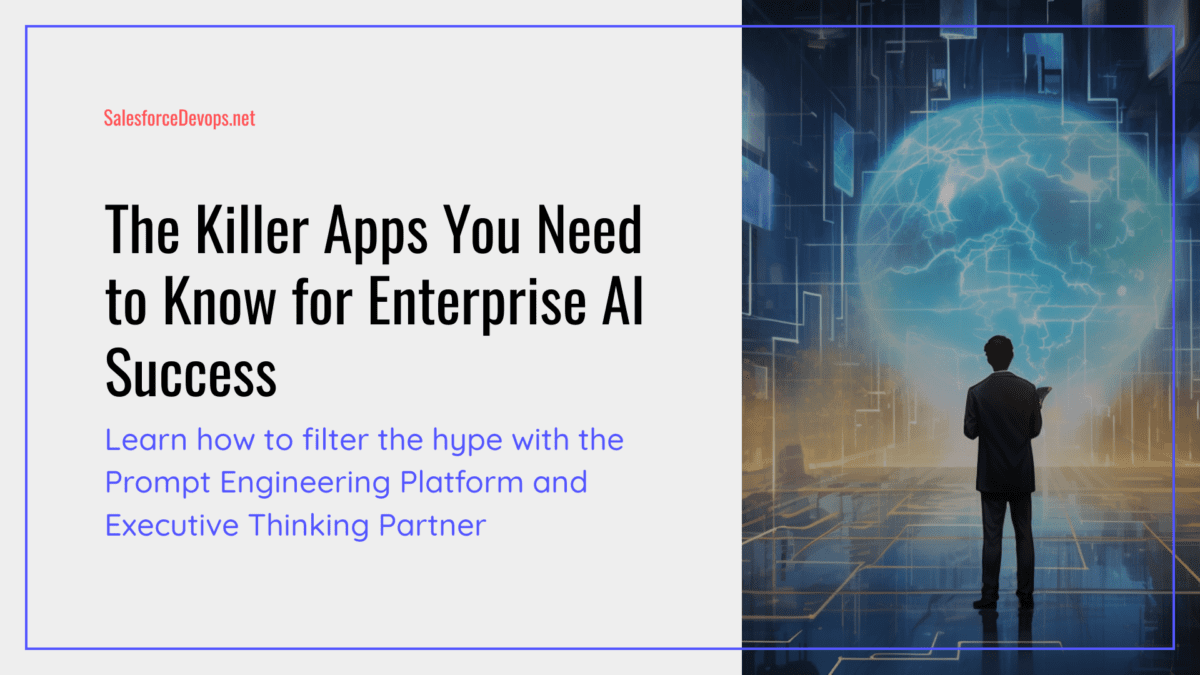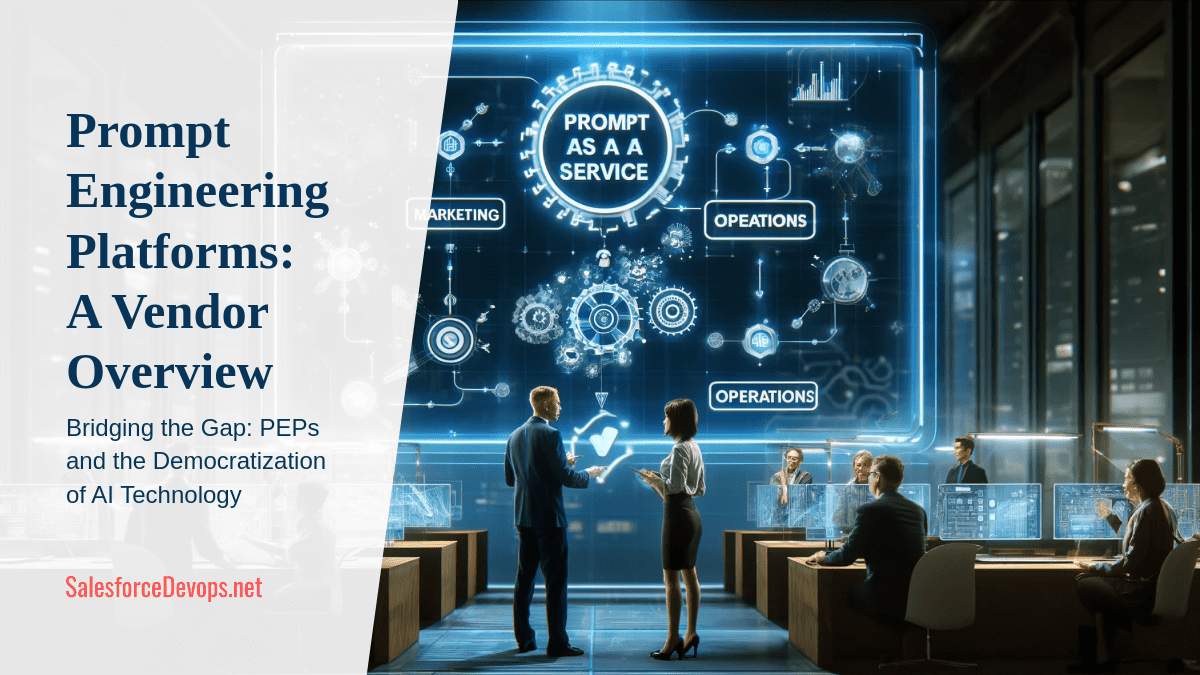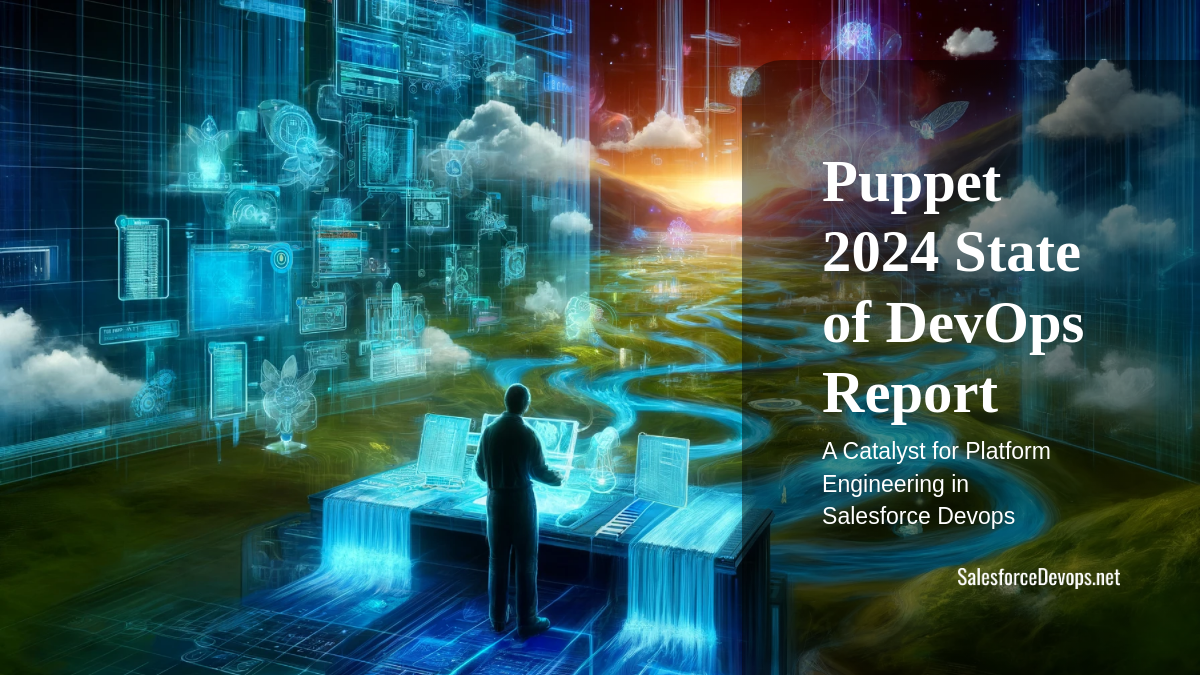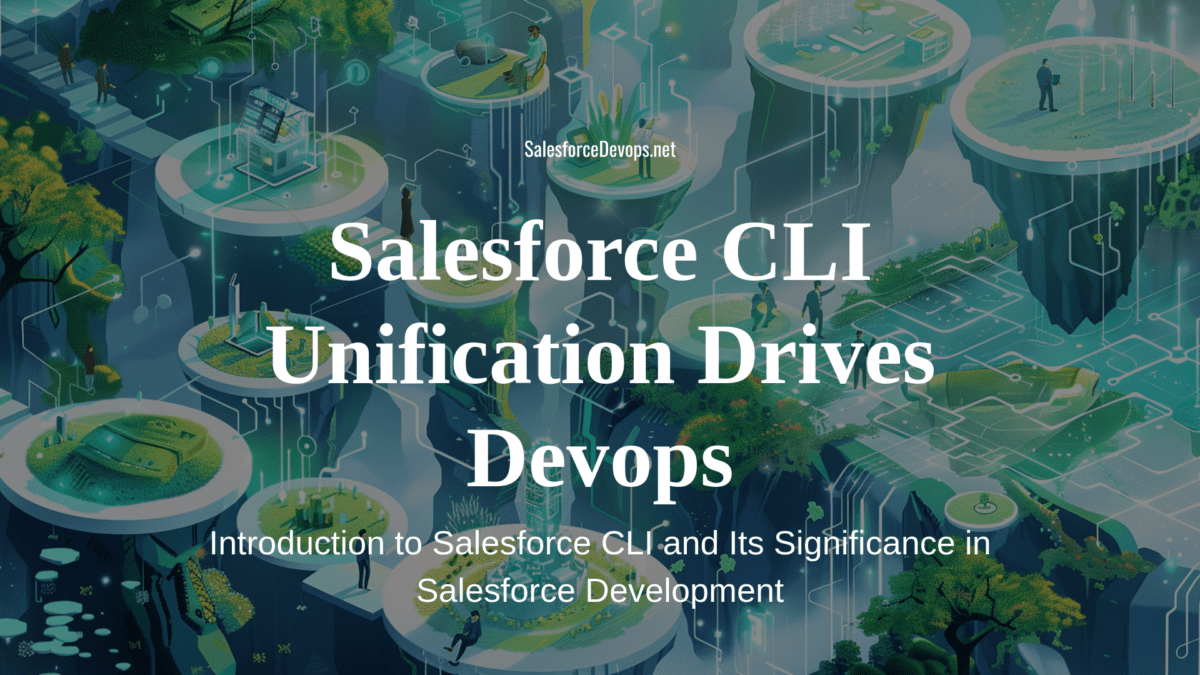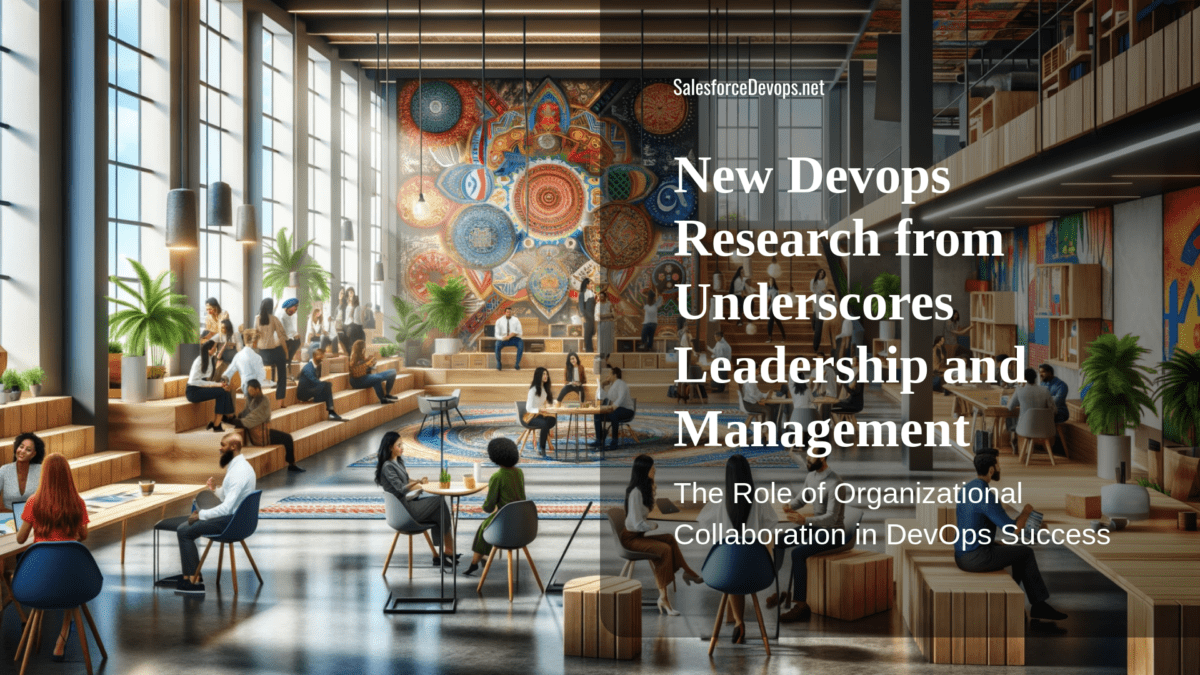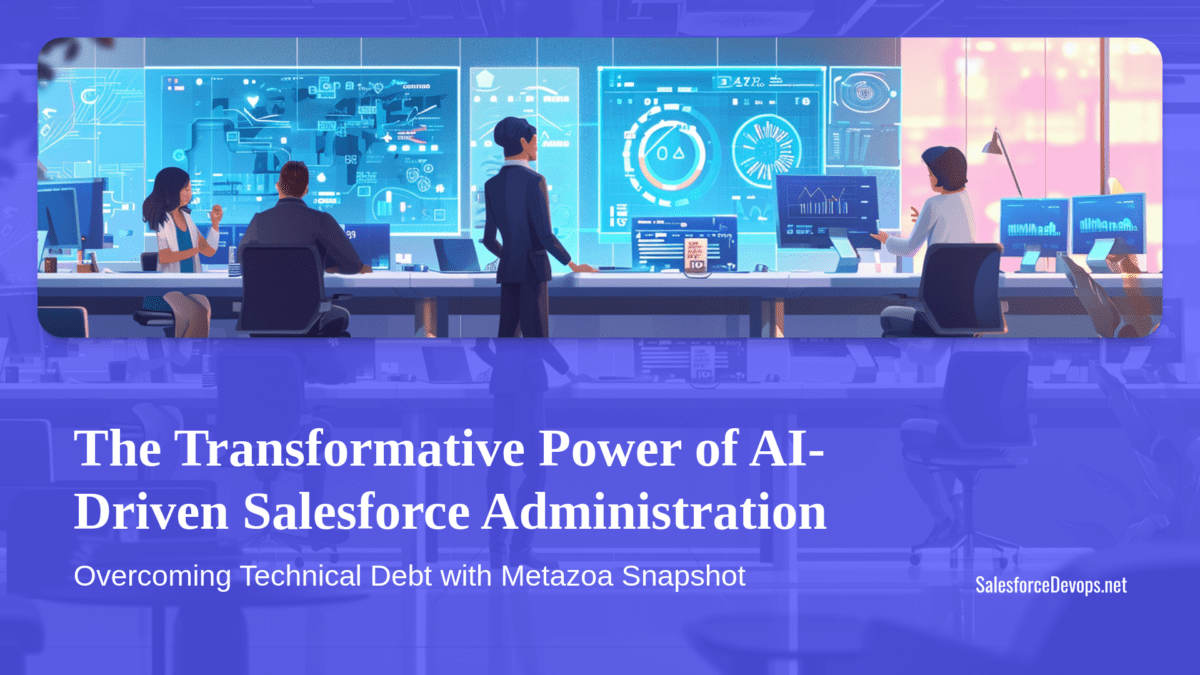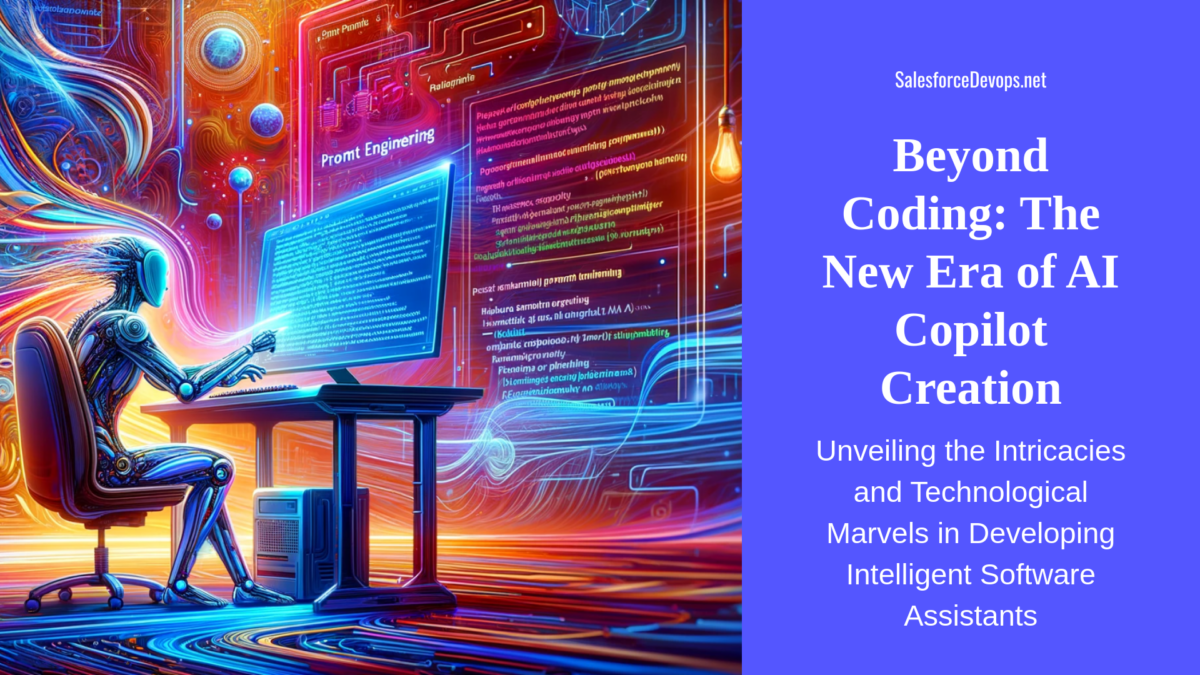The Killer Apps You Need to Know for Enterprise AI Success
Artificial intelligence (AI) promises to transform businesses, but the hype makes it hard for IT leaders to chart an effective adoption strategy. By understanding two key enterprise AI application categories, the Prompt Engineering Platform (PEP) and the Executive Thinking Partner (ETP), technology executives can navigate the distractions and implement a phased rollout of AI that drives tangible business value.
In this article I explain what PEPs and ETPs are plus their respective benefits and challenges. I will discuss a prototype PEP I developed, named AI Gateway for Salesforce. Then we’ll cover how using an incremental approach of implementing the PEP first, then the ETP, sets up your enterprise for AI success. And then we’ll check out how PEPs and ETPs are now being built by Salesforce and ecosystem ISVs.
Table of contents
Understanding the Prompt Engineering Platform (PEP)
A Prompt Engineering Platform uses large language models like GPT-4 or Claude-2 to optimize and automate business activities. Instead of replacing humans, PEPs enhance worker productivity, on an enterprise scale, through AI-powered tools. The core capabilities needed for a basic PEP include:
- Storing prompts as parameterized objects
- Executing prompts via API callouts
- Capturing API response output
- Sharing prompts in a central catalog
- Applying governance controls on users
PEPs are already feasible to implement in areas like customer service, document creation, data processing, and software testing. The familiar concept of bots automating repetitive tasks applies here, except PEPs use AI to handle unstructured data like text, voice, and images.
For example, a PEP could answer routine customer support tickets or process mortgage applications. It reviews documents and other data inputs, generates responses through machine learning, and integrates with backend systems. This slashes costs and response times, which frees up human agents for complex issues.
The benefits of PEPs are tangible and measurable: increased efficiency, faster throughput, and lower operational expenses. And with cloud services such as Azure Cognitive Services, Google Vertex AI, and AWS Bedrock, building PEPs is accessible without massive data science teams.
PEP benefits are also measurable by finding PEP applications which have a direct impact on key enterprise value streams. In this way, we can link the performance of PEP applications to enterprise key performance indicators (KPIs).
AI Gateway for Salesforce: A Prototype PEP
AI Gateway for Salesforce is a free, open-source project which serves as a simple prototype Prompt Engineering Platform (PEP) on the Salesforce platform. Any Salesforce admin or developer should be able to install it and start using prompts right away.
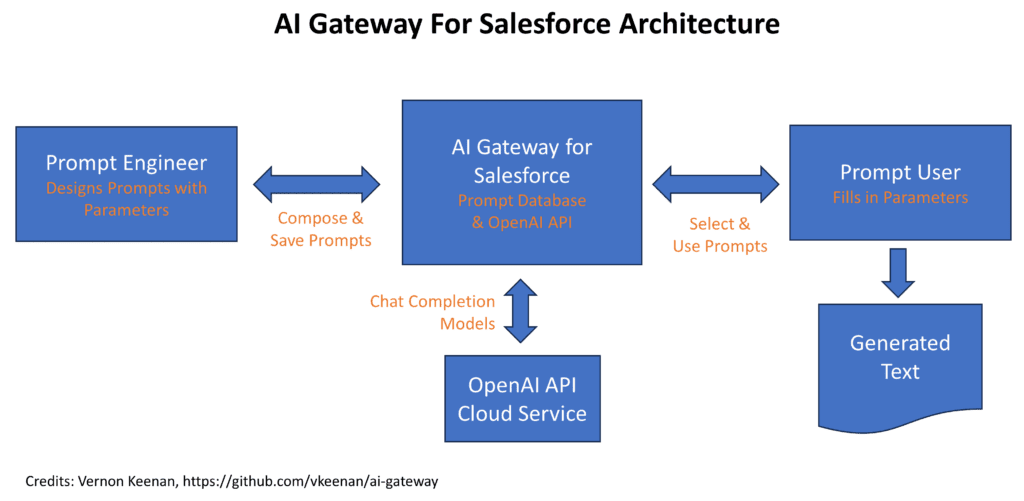
While basic in its functionality, this project provides a template for enterprises to start building their own internal PEPs for automating workflows with AI. The code resources offered accelerate development of a governed PEP environment. You gain sample data models, flows, permission sets and credentials setup. These can be extended and customized as needed.
Benefits of starting with a prototype like AI Gateway for Salesforce include:
- Low risk way to pilot PEP concepts
- Internal demo to showcase capabilities
- Starting point for production enterprise PEP
- Validates integration requirements before scaling
As your team’s skills mature, components like the UI, catalog, and API integration can be enhanced. But the core framework this project provides delivers a working PEP in days rather than months.
For IT leaders strategizing how to adopt AI, implementing a pilot PEP based on this blueprint can build organizational knowledge. A successful prototype project also earns stakeholder confidence to invest in a full-scale Prompt Engineering Platform.
The Future: Executive Thinking Partner (ETP)
Looking ahead, IT leaders have big visions for AI’s potential in areas like strategic planning, forecasting, and risk assessment. This leads to the aspirational idea of an Executive Thinking Partner.
ETPs combine natural language processing, generation, and machine learning to collaborate with business leaders on cognitive tasks. The concept moves beyond automation towards AI-augmented intelligence and decision making.
For example, ETP could provide data-driven competitor analysis, identify new growth opportunities, or stress test strategic plans. It ingests volumes of information, models complex business scenarios, and explains its logic in nuanced natural language dialogue.
But while ETPs promise to amplify executive thinking, they remain an emerging technology. Acting as an AI advisor requires advanced contextual understanding and reasoning that today’s systems lack. It will necessitate custom development by large, skilled AI teams.
However, in the Python ML community there are many prototype ETP systems in use today. And several developers and consultants are offering LangChain-type “chat with your data” solutions. But the software ecosystem for building ETPs is currently so dynamic that a shake-out period is likely soon.

Early commercial ETP capabilities are on the horizon from ventures like Cohere. But for most enterprises, these tools remain aspirational and should not drive near-term AI investments.
Enterprise AI Recommended Approach: PEP to ETP
So, what’s the recommended path to maximize enterprise AI success? Ignore the hype and walk before you run.
First, identify operationally intensive processes where applying a PEP can optimize productivity and costs. Find the value streams associated with these optimization opportunities. Then prioritize use cases with clear ROI based on expenses reduced or revenue gains.
Build PEP capabilities incrementally, while adjusting operational processes and governance to integrate AI responsibly. Educate employees on risks of rogue AI chatting when using company data with consumer apps.
| Factor of Analysis | Prompt Engineering Platform (PEP) | Executive Thinking Partner (ETP) |
| Definition | Uses large language models to optimize business processes and workflows | Advanced AI system designed to augment human decision making and judgment |
| Goal | Automate repetitive tasks and improve operational efficiency | Provide AI-powered support for strategic thinking and planning |
| Example Use Cases | Document creation, data extraction, software testing, customer service copilot | Strategy analysis, forecasting, risk assessment, decision support |
| Implementation Complexity | Lower – can be built with available AI cloud services | Higher – requires large, dedicated AI/ML teams and custom development |
| Integration Effort | Medium – some workflow integration required | High – deep integration into executive and management processes |
| Maturity Level | Ready for testing today with cloud services like AWS, GCP, Microsoft | Emerging – some early-stage capabilities from vendors like Cohere |
| Key Benefit | Tangible cost savings, productivity gains, improved CX | Augmented intelligence and decision making |
| Recommended Adoption Approach | Implement PEP first to validate AI and build needed infrastructure | Tackle ETP after gaining experience from PEP projects |
As employees become comfortable working with governed AI, scope can expand. Treat your workforce as partners in adopting AI rather than adversaries.
Once multiple PEPs produce returns across the enterprise, it’s time to start strategically exploring ETP pilots. But even then, maintain focus on concrete benefits over sci-fi visions of AI.
This phased approach delivers ROI throughout a well-paced, safe AI adoption journey:
- PEPs reduce expenses and improve operations
- Early success builds trust, skills and data for more advanced AI
- ETPs later amplify strategic thinking and decision making
The PEP to ETP framework steers enterprises away from AI hype cycles towards sustainable, value-driven adoption activities. IT leaders should learn about these two key applications so they can be guideposts on the AI journey. Start with the achievable PEP wins, then progress strategically toward increasingly advanced ETP capabilities.
Classifying Available Salesforce AI Solutions
Salesforce and ecosystem ISVs today offer a range of AI-infused products which may be classified as a PEP, an ETP, or a blended hybrid. GPTfy is a well-integrated Salesforce PEP app that includes data masking and effective PII management. This lets you safely use parameterized prompts based on org data. GPTfy also lets users secure prompts and monitor results.
Parameterized prompts like those in GPTfy or AI Gateway are very functional. In fact, parameterized prompts operate very much like a subroutine or invocable process. The Sales GPT Email Generator that is part of Salesforce AI Cloud works exactly like a functional PEP application. It uses a limited number of parameters to shape a response in the form of an engaging, personalized outbound marketing message.
We will soon see more PEP applications backed by specialized grounding data such as enterprise database schemas. Instead of being a functional PEP application, these will be grounded PEP applications. These apps are in the blended category because they work like a PEP but have some ETP features that require AI orchestration. This seems like a natural progression since PEPs are technically easier to build.
ElementsGPT from Elements.cloud generates a user story with the click of the button, so it is a PEP application. But there is a lot of behind-the-scenes activity occurring to make that happen. Elements has an AI orchestration scheme to bring in the right data needed to construct that user story. This is a good example of a grounded PEP application which fits into the blended PEP/ETP category as well.
Metazoa has PEP and ETP applications now built into their product roadmap and current offering. They have several small, functional PEP tools that facilitate SOQL statement generation and other admin utility functions. Metazoa also has an ETP prototype that lets you have a multi-turn conversation with your org metadata.
Enterprise AI: Learn to Walk Before You Run
Generative AI is a new application development platform which makes IT users, platforms, ISVs, and observers like me look “outside the box.” We are at an exciting threshold where enterprise workflows will start to be reinvented and optimized with AI. This shift will create new competitive opportunities in every industry, which should make all incumbents nervous. How you and your company responds to the AI opportunity will certainly impact your future fortunes.
By understanding the differences between a PEP and an ETP application you can filter out some of the noise from vendors. If you can tell that the product you are evaluating is an ETP, and some of the promises sound vague, that indicates the vendor hasn’t figured out how to build an ETP yet. This is because the perfect ETP solution has not been built yet. If, on the other hand, a vendor is offering a targeted PEP app, then it is more likely to perform as advertised.
By learning to walk before you run with enterprise AI solutions you increase your chances of success. So, start with your value streams and find measurable operational activities that could use a little AI pixie dust. Start with buying or building a PEP to improve key operational functions. Next, determine how to apply PEPs to additional applications before transitioning to advanced ETP functionality.
Lastly, remember to address the threat of unauthorized consumer chatbot usage, which currently contributes to corporate data leaks. Head off this latest shadow IT problem by rapidly bringing in governed and easy-to-use PEP solutions. With the power of effectively deployed PEPs, businesses can counter ShadowGPT, enhancing the productivity and job satisfaction of numerous employees.
